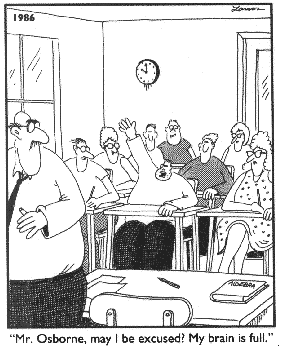
Every time I meet someone new, we inevitably get around to the "what do you do?" question. My standard answer is usually "experience designer", which is nice because it gives us at least 5 minutes of conversation fodder where I explain what an experience is, how exactly I "design" them, etc. Kinda neat, actually.
Lately, however, I've considered using a slightly different answer along the lines of: "Hi, I'm a
design educator. Have a couple of hours to let me explain?"
You see, even though a big part of my day is spent
literally designing things and experiences - talking to users, writing on whiteboards, sketching, diving into Fireworks, etc. etc. - I'm finding that an almost equally big part of my day revolves around educating clients on what it means to actually design. And this is great: spreading the design gospel ("design-gelizing" as I call it) is a very rewarding process that I don't think any designer worth his or her salt would give up. Because in the end, giving a client something pretty and useful is much more deeply satisfying when they have an understanding of how you got there (and ideally, were with you every step of the way).
I wonder, however, if "knowing/doing" design necessarily translates into "teaching" design? Like the assumption that having a PhD means you have the magical personality traits that make you a good teacher (the fallacy many of us were exposed to in grade school and college). There is something to be said for effective teaching, and I wonder if the design discipline realizes that this is something its disciples need to know in order to succeed. I know I'm far from an expert design educator, and constantly look to other designers for inspiration on how to get better.
Mad Men ain't design

Of course, all this assumes that your "students" (clients) are willing to learn. I think popular culture has this idea that design is like a scene from Mad Men: Marlboro/Colgate/whoever approaches an agency for help. The agency's creatives go into a corner somewhere, holed up with booze, cigarettes and greasy haircuts. A few hours/days/weeks later the creatives pop out with beautiful mockups and designs, the client makes a few quick suggestions (or vetoes the whole thing with a wave of their hand), and the designs are pushed into the real world. While this simplistic model makes for great TV ("Will Don Draper pull a creative coup de grace in time?!! Will he save the company with his brilliance??!!"), it sends the (wrong) message that design occurs in isolation.
I call this the design "black box", and it's the stickiest topic (I believe) in the design industry today. Some (uber-famous) design firms make oodles of money by creating processes that try shine a light into the box and involve their clients, which I think is awesome, but a whole load of other firms go the Mad Men route, meeting the general public's expectation that design is for "designy people".
This is cowardly design. As designers it's our right - nay, our
responsibility - to ensure that our clients not only come out of the design process with useful, relevant, and beautiful design, but are also more educated about the process as a whole. We don't want clients who fumble along without a real design inclination after our involvement. We want design
converts who are so jazzed by the whole affair that they go on to become design-gelists in their own right. To design and not educate effectively, is, in my mind, to fail as designers.
Bet ya didn't think you had to add "educator" to your job description, eh?